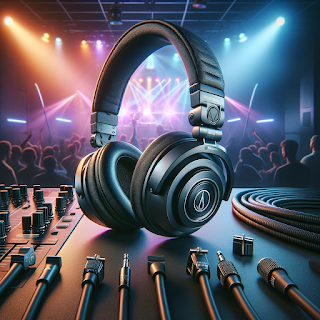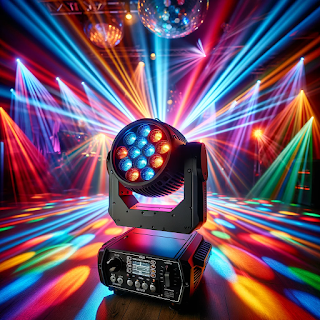Mastering the Art of Effective Lighting for Your DJ Events
**The Importance of Lighting in DJ Events**
When we think of DJ events, our minds often jump to the beats, the mixes, and the energy of the music. However, an equally crucial element that can make or break the ambiance of an event is the lighting. Proper lighting enhances the overall experience, creates the desired mood, and amplifies the energy of the music. Let's dive into the world of effective lighting techniques for DJ events.
**Understanding the Basics: Types of DJ Lights**
1. **Par Cans**: These are traditional stage lights and come in both LED and halogen forms. They produce a static beam of light, which can be colored using gels.
2. **Moving Heads**: As the name suggests, these lights can move. They can pan (move horizontally) and tilt (move vertically), allowing for dynamic light shows.
3. **Lasers**: Laser lights produce sharp, focused beams and can be used to create intricate patterns and effects.
4. **Strobes**: These produce rapid flashes of light and are effective for creating energetic moments during a performance.
5. **Uplighting**: These are lights placed on the floor, projecting light upwards. They're excellent for setting a mood and highlighting architectural details of a venue.
**Matching Lights with Music**
The key to a successful DJ light show is synchronization with the music. Fast-paced tracks might benefit from rapid light movements and strobe effects, while slower, more mellow tracks might be better suited to gentle fades and softer colors.
**The Role of DMX Controllers**
DMX controllers are the backbone of a DJ's lighting setup. They allow for the synchronization of multiple lights and the creation of coordinated light shows. By understanding how to program and utilize a DMX controller, a DJ can create a seamless integration of music and lighting.
**Creating a Mood with Colors**
Colors evoke emotions. Warm colors like reds and oranges can create an intimate, cozy atmosphere, while cool colors like blues and purples can produce a calm, serene environment. Think about the mood you want to set for each segment of your event and adjust your lighting colors accordingly.
**Audience Interaction**
Engaging the audience is crucial. Consider incorporating interactive lighting elements. For instance, you could have lights that respond to the audience's movement or sound. This not only creates a memorable experience but also makes the audience feel like a part of the show.
**Safety First**
While lighting can enhance an event, it's crucial to ensure the safety of both the equipment and the attendees. Ensure all wires are securely taped down, and lights are firmly mounted. Additionally, be cautious with strobe lights, as they can affect individuals with photosensitive epilepsy.
**Incorporating Visual Projections**
Consider incorporating projectors to display visuals or videos in sync with the music. This adds another layer to the sensory experience and can be particularly impactful for themed events or specific tracks with associated visuals.
**Conclusion**
Mastering lighting for DJ events is as much an art as it is a skill. By understanding the various tools at your disposal and how they can be used to enhance the musical experience, you can elevate your events to new heights. Remember to continually experiment, learn from each event, and always keep the audience's experience at the forefront of your decisions.




Comments
Post a Comment